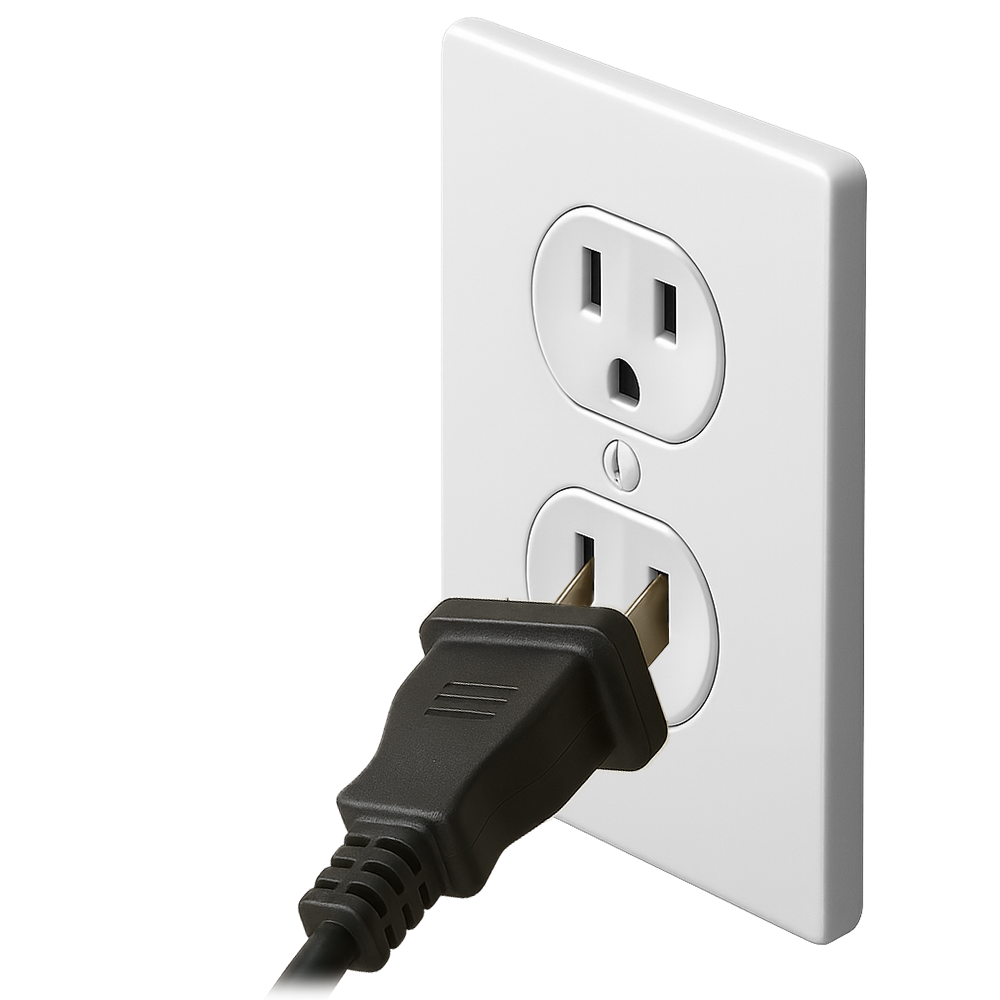Have you ever gone to plug something in—only to watch it slowly slide out of the outlet like it’s given up on life?
You’re not alone. A loose electrical outlet isn’t just annoying—it can also be a serious safety hazard.
In this guide, we’ll explain exactly why your outlets feel loose, how to fix them quickly, and how to know when it’s time to call in backup.
Common Reasons Your Electrical Outlets Feel Loose
Understanding the cause is the first step to fixing the problem for good.
1. Worn Out Receptacle Contacts
Inside every outlet are tiny metal contact points that grip the plug prongs.
Over time, those contacts can wear down from repeated use. When they lose tension, plugs fit loosely or fall out.
⚡ Warning: Worn contacts can cause arcing, sparking, and even fires.
2. Loose Mounting Screws
Sometimes it’s not the internal parts—it’s the outlet itself moving inside the wall.
Loose screws holding the outlet to the electrical box can make it shift every time you plug something in.
You might notice:
-
Outlets wobbling
-
Wall plates not sitting flush
-
Cracks around the outlet cover
3. Old or Cheap Electrical Boxes
Especially in older homes, electrical boxes can be:
-
Too shallow
-
Warped
-
Poorly installed
This leaves outlets unstable, no matter how tightly you screw them in.
4. Heat Damage Over Time
Outlets carrying heavy loads (like space heaters, hairdryers, or kitchen appliances) can get hot.
Heat expansion can slowly deform outlet components, causing looser connections.
How to Fix a Loose Electrical Outlet
Depending on the root cause, here are your best options:
Option 1: Tighten Loose Screws
If the outlet itself moves, turn off power at the breaker, remove the wall plate, and tighten the mounting screws inside the box.
🛠️ Tip: Always test with a voltage tester before touching wires.
Option 2: Replace the Outlet
If plugs still fall out after tightening screws, the contacts are likely worn out.
✅ Solution: Replace the entire outlet with a new one.
(Or if you want a faster, easier fix without touching wiring — see Option 3.)
Option 3: Use a Snug Plug
If you’re not ready to deal with wiring or call an electrician, a Snug Plug is the safest and fastest solution.
-
Slides easily into any standard outlet
-
Instantly grips plugs tightly again
-
No tools, wiring, or electrician needed
-
Adds extra outlet protection and stability
⚡ Snug Plug reinforces loose outlets in seconds and keeps your plugs firmly in place — without the risks of DIY electrical work.
Learn More About How Snug Plug Works →
When to Call an Electrician
✅ Call a licensed electrician if:
-
Outlets feel hot to the touch
-
You see sparks or smoke
-
Outlet is cracked, burned, or melting
-
Multiple outlets are loose across a circuit
-
You’re uncomfortable working around electrical wiring
Final Thoughts: Don’t Ignore Loose Outlets
Loose outlets aren’t just a minor annoyance.
Left unfixed, they can lead to:
-
Intermittent power loss
-
Damaged appliances
-
Increased risk of electrical fires
Whether you tighten it, replace it, or reinforce it with a Snug Plug, taking a few minutes now could save you a big headache later.
Quick FAQ
Q: Is a loose outlet dangerous?
A: Yes. Loose outlets can cause arcing, which increases the risk of fires.
Q: Can I fix a loose outlet without replacing it?
A: In many cases, yes! A Snug Plug can reinforce loose connections without touching wiring.
Q: How much does it cost to fix a loose outlet?
A: DIY fixes like tightening screws cost almost nothing. A Snug Plug is a small investment under $15. Hiring an electrician could cost $100–$200 depending on location.
Fix Your Loose Outlets Today → Get Snug Plug



Share:
The Ultimate Solution for Fixing Loose Connection Issues in Outlets
The Easiest Way to Fix a Plug That Falls Out of the Wall